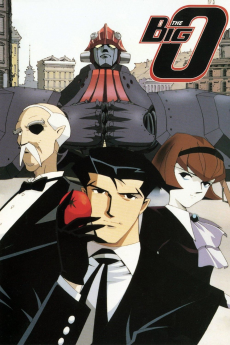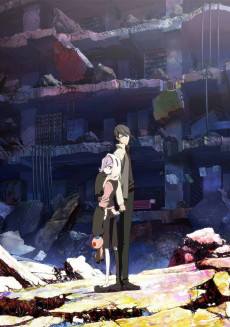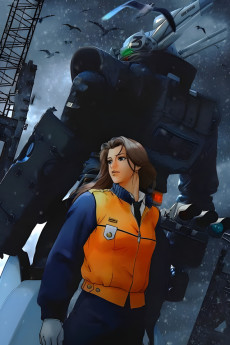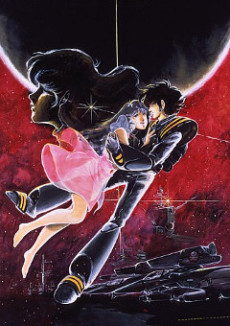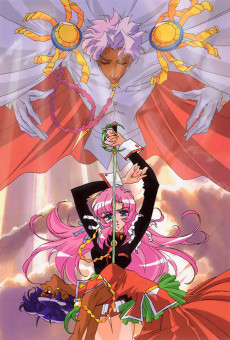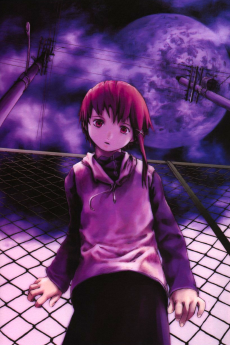THE BIG O (2003)
STATUS
COMPLETE
EPISODES
13
RELEASE
March 27, 2003
LENGTH
24 min
DESCRIPTION
Continuation of The Big O.
Originally planned as a 26-episode series, low viewership in Japan reduced production to the first 13.
Positive international reception resulted in a second season consisting of the remaining 13 episodes; co-produced by Cartoon Network, Sunrise, and Bandai Visual.
CAST
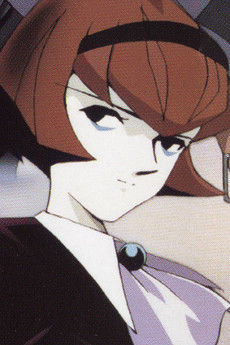
R. Dorothy Wayneright
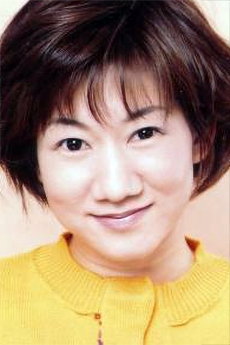
Aki Uechi

Roger Smith
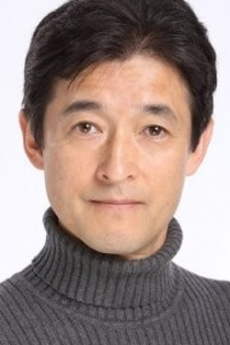
Mitsuru Miyamoto

Norman Burg
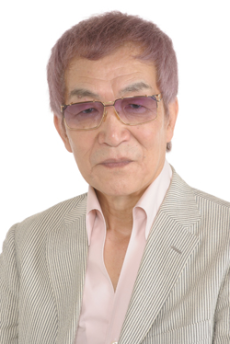
Motomu Kiyokawa

Angel Rosewater

Emi Shinohara

Michael Seebach
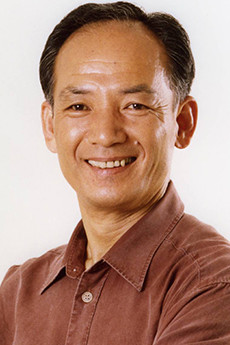
Katsunosuke Hori

Dan Dastun
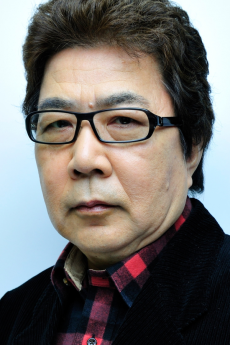
Tesshou Genda
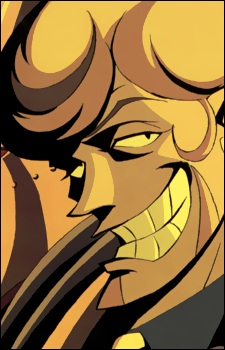
Jason Beck
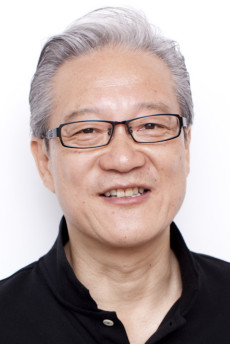
Houchuu Ootsuka

Alex Rosewater
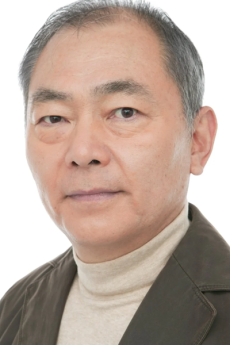
Unshou Ishizuka
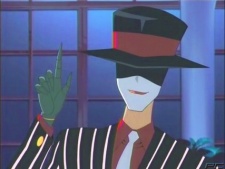
Alan Gabriel
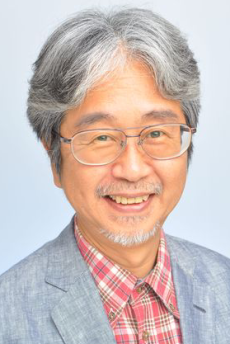
Issei Futamata

Big Ear

Shinpachi Tsuji

Timothy Wayneright I
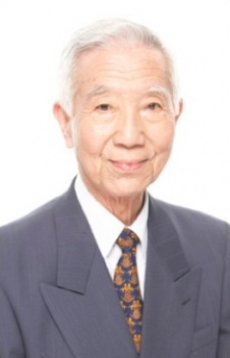
Takkou Ishimori

Bonnie Frazier
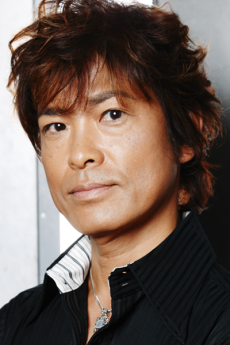
Tooru Furuya
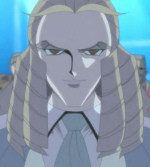
Vera Ronstadt

Sayuri

Gordon Rosewater
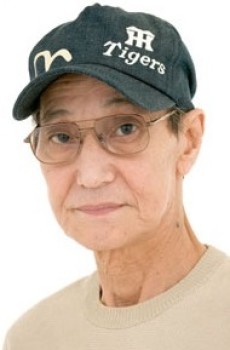
Gorou Naya
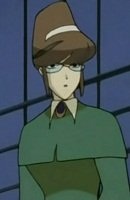
Louise Ferry

Tomoko Ishimura
EPISODES
Dubbed
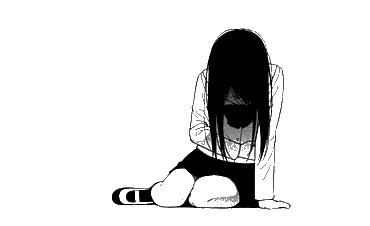
Not available on crunchyroll
RELATED TO THE BIG O (2003)
REVIEWS

TheRealKyuubey
40/100I try to not let disappointing sequels and reboots bother me, but this one hurts.Continue on AniListIn the mid-nineties, character designer Keiichi Sato had an idea for a multi-media franchise. His concept was a giant robot show, but with a unique edge... Taking inspiration from both Japanese and American television of the sixties and seventies, with the world design of classic kaiju movies, the aesthetic of Gotham city and a swinging film noir atmosphere to give it an irresistible retro kick, he would eventually join up with director Kazuyoshi Katayama and writer Chiaki Konaka, the latter of whom added several more intriguing and provocative ideas to the mix. Unfortunately, as promising as this team may have looked, production was troubled right from the start... After some initial delays, the toy line never getting off the ground, and the side story manga failing to drum up interest(it ultimately only reached six volumes before being largely forgotten by history), and the anime itself... Didn’t fare much better.
The series received some decent critical responses, but it failed to set the world on fire, not really bringing in the money or ratings that were expected of it. A promised 26 episodes were cut down to 13, and the writers decided to take a calculated risk by ending on a salivating cliff-hanger, hoping that it would get the series picked up for a continuation... And it did, but not for another few years. Weirdly enough, Big O was not the first initially unsuccessful anime that Cartoon Network made bank on, and following the colossal western success of Cowboy Bebop, they were looking for another sci-fi action show with a retro appeal, and damn did they get one. Big O wasn’t quite as popular as Bebop, but it still did about a thousand times better with western audiences than it did on its own turf. It did so well, in fact, that Cartoon Network ponied up the money to commission a second season from Studio Sunrise, with certain demands... And who were Sunrise to deny the source of Big O’s financial salvation?
To be perfectly frank, I wasn’t there to see how all this played out at the time. Big O’s entire existence on American TV spanned the early-to-mid 2000’s, and I didn’t actually hear about or see it until around 2013 or so. I didn’t have to experience the wait for a second season in limbo, I didn’t have to bite my nails over the cliff hanger or figure out how to cope with the possibility that a conclusion would never come... I wasn’t there, and while it’s possible somebody who did experience all of this would have a different experience to talk about than I do, I can only really speak from my own experience. I should also point out that while The Big O is considered one uninterrupted series over on Myanimelist, that’s not the case on Anilist. I posted a review of season one less than a week ago, and I can’t guarantee you won’t be lost if you don’t read that before continuing on with this companion piece. Just to be nice, here’s a link(https://anilist.co/review/15082) for you, or you can just get there through my profile. That being said, let’s just move on.
Being that the first season ran from 1999 to 2000, and the second season started a couple years later, it should go without saying that they look drastically different. This is due to the industry, between the two releases, switching from hand drawn cells to digital painting, a change that’s brought a considerable amount of progress and regression to the anime medium. I don’t personally have a strong opinion between the two... I like that digital painting makes anime far more efficient to create and consistent in quality(well, most of the time in both cases), but I also wouldn’t argue with you if you sighed wistfully and said “They don’t make them like they used to...” Because yeah, hand drawn cells often had more of a capacity for artistry, and it always felt like more effort went into it, with a personal touch that a lot of people miss. Sadly, even for a guy whose first exposure to the series was a straight up two-season binge, the difference in quality between episode 13 and 14 isn’t just noticeable, it’s jarring.
Now I should say, it gets better as the series goes on. By the end, they’ve figured out how to grow into their new method and get the best possible exposure of the Big O universe out of it, but those first few episodes, man... Woof. They try to use a lot of the same budget saving tricks from the first season, they’re nowhere near as subtle as they used to be. The lighting feels artificial, characters moving against a still frame background do not blend into their surroundings like they’re supposed to, they’re frequently off model, and while they tried to replicate the off-beat cinematography that worked so well before, it just feels cheap and hollow at this point. Like I said, the series does grow into digital painting as it goes on, but it is a climb. The music, however, suffers a drop of quality that it never recovers from. In the first season, they employed a small number of soothing saxophone riffs as a motif throughout, and it is gone in season 2, save for maybe three or four random appearances. The music it’s been replaced by is definitely not terrible, I could easily see it being used well, but it never fucking shuts up, it occasionally comes close to drowning out dialogue in a few scenes, and it’s just a tad too generic to be as overplayed as the saxophone riffs were without wearing out it’s welcome.
The English dub, sadly, has also taken a hit, but thankfully not as bad. Steve Blum is still just as amazing as he was previously, ably navigating Roger Smith through some tough waters in terms of his development. Lia Sargent, who has returned to write and direct the dub, does seem to have lost a step with her portrayal of Dorothy, but for reasons we’ll get into later, I can’t say I blame her. I didn’t mention Wendee Lee in the previous review, but yeah, basically the same story as Lia Sargent, but to a smaller degree. The most surprising aspect of this dub, however, isn’t one of the returning cast members, but one of the new ones... They brought in Crispin Freeman to voice an insane, foppish new villain named Alan Gabriel, and I hate myself for saying this, but he sucks... This is so far out of his range it’s not even funny. This is only the second role of his I haven’t liked, and he’s not quite as bad as he was in Now and Then, Here and There, but that’s a low bar to clear. Also, Carolyn Hennessey plays another new villain, and her German accent is hilariously bad.
So, I said earlier that Cartoon Network had some demands. They had two, actually, and on paper, they seemed like perfectly reasonable demands, giving the money they were putting up to rescue this show. What they asked of Sunrise was for more action, and some solid answers to the mystery of the series. Again, perfectly reasonable, and Sunrise was more than happy to accept... And at first, things didn’t seem too bad. Ignoring the abrupt drop-off in visual and audio quality, the story starts out progressing in a more or less natural fashion. Towards the end of season 1, we were getting hints at Paradigm City’s past becoming unraveled, along with some not-so-subtle hints at Roger Smith’s identity unravelling with it. Thus, it shouldn’t be too surprising that season two went all in on this, shifting from a story about Roger Smith solving mysteries and conflicts while occasionally getting into giant robot fights, to a show about Roger Smith getting into big robot fights while occasionally questioning who and what he is. I personally would have preferred a more gradual shift, but you can’t say the new season doesn’t kick off in bold and exciting fashion, even if it does run through some alternate universe bullshit in order to do so.
It’s pretty clear that Roger Smith isn’t quite the same character he was previously, which is fine, it falls with the acceptable bounds of character development. What’s far less excusable, however, is what they did to Angel and Dorothy. Angel has had all traces of sexy mystique stripped from her, and loses a lot of her agency and personality in order to become more of a plot-delivery type character, one who’s growth and identity is largely tied to the story. And Dorothy? They did my girl dirty. She’s a lot more talkative and expressive now, her dialogue sounds like it’s been homogenized towards everyone else, and all the sassy, sardonic wit that she had before has been scrubbed clean. There isn’t any more subtlety to her speech. She often says things that immediately make you think, no, that’s something she wouldn’t have felt the need to vocalize before. She has never felt like a character who would ever talk to herself, but now, she can’t stop, and to make matters worse, she dumps exposition just as bad as everyone else.
I said before that Cartoon Network’s demands were perfectly reasonable on paper, and yeah, they sounded doable, especially when the alternative was just leaving the series dead in the water like it had been previously. Even with the power of hindsight, I can’t see any logical reason why Sunrise would have refused those demands, but that doesn’t change how badly these decisions played out in practice. I don’t know, maybe this is just my opinion, but the mecha fights and the over-all mystery were never the stronger aspects of Big O. The series was a hit because of its atmosphere, witty dialogue and inspired execution. It’s fair to say you can’t really take me seriously on the subject of giant robot battles, because it’s not my thing and it never has been, but they’ve never done anything for me even in this show... I just accepted them as part of the package, and I was totally fine with them that way, but a tighter focus on them without the aid of a cool film noir aesthetic to back it up just falls flat for me.
And then you have the increased focus on the Paradigm City mystery, which I’m feeling a lot more confidant in calling a bad idea. I don’t have a source on this, but you kind of got the impression throughout season one that the writers didn’t exactly have a firm grasp of what the truth even was, and it was just supposed to lurk in the background giving the viewer something to play around with and theorize over while each episode just did it’s own self-contained monster of the week thing... Which is by no means a bad approach, as Chiaki Konaka did pretty much the same thing to great effect in Digimon Tamers... But it only works if you’re playing the long game, and trying to force a conclusion out of that kind of set-up in only thirteen episodes is insane. It results in a ton of exposition, several dumb and/or incoherent reveals that are confusing at best and insulting at worst, and the abject sacrifice of everything that made the series cool in the first place.
And you may be thinking “But hey, it’s a mystery, there has to be a conclusion, right?” No, not necessarily. Sometimes, explaining a mystery can ruin a story. Shows like Adventure Time and RWBY lost a lot of their chaotic creative energy when they started taking their lore seriously, and while I personally liked them better afterwards, I can’t argue with the people who dropped off when the early energy faded. Key the Metal Idol is one of my favorite anime of all time, and it features a fantastic mystery, but the episode where they spend over an hour explaining everything to you is just barely watchable. I loved the original standalone Black Rock Shooter OVA, but then the follow-up series that explained everything was trash. And hell, since I’ve already gone this far, I spent one of my most divisive reviews ever saying I didn’t care about the mystery and potential depth of Serial Experiments Lain or what it was trying to say because I didn’t connect with the plot or main character in even the most basic way. Yeah, theoretically a mystery in a piece of media should have a solution, but there are times where it’s far stronger if left unsolved.
This entire concept doesn’t make a lot of sense, and to make matters worse, I’m pretty sure it didn’t make sense from the start, but it was such an easy show to get lost in that it was fairly easy to just not think too hard about it. Losing touch with the cooler elements of the series forces you to shine a light on these ideas, and what you see there isn’t exactly pretty. For example, in the first season, I never asked what memories are in this universe... I saw people fight over them, I saw people venture into dangerous situations to find and recover them, and I knew they were valuable, but what are they? Are they a physical thing? How are they stored? How are they transferred between people? How can an entire person just BE a memory? On another note, I mentioned in my last review how they didn’t explore the topics of memory and identity too hard, and they went out of their way to rectify that this season, but for their efforts, it just comes off as pretentious and poorly thought out. It doesn’t crawl quite as far up its own ass as Ergo Proxy did, but not for lack of trying. Also Roger and Dorothy are hinted at being love interests this time around and I hate it.
My strongest memory of this series from when I watched it in 2013, and one of the only memories I retained going into my rewatch of the series over the last week, was a series of events in episode 18 that you have to see to believe. As the plot goes, Roger Smith falls for an obvious trap by a former adversary(featuring an afro because he got electrocuted... No, really...). Said adversary constructs an identical robot replica bust of Roger, one that moves and speaks like him. He steals Roger’s watch, gives it to the replica, straps that replica to a remote-control cart, and drives the bust through the city repeating the phrase “Big O!” over and over again so the Big O mech will follow it, somehow not matching its pace. The cart somehow gets from the street to the top of a building in between shots and drives into the water, hoping the Big O will fall in after it and be lost in the ocean. I feel like by pointing out that Big O has entered large bodies of water with no issue before would require to me to assume you got through the rest of this paragraph without already screaming into your pillow about how fucking stupid this entire concept is, so let’s move on.
I try to not let disappointing sequels and reboots bother me, but this one hurts. The second season of The Big O is a shadow of its former self. I’m honestly not sure if bringing it back was a good idea or not... On the one hand, if they had left things as they were, fans would have never been satisfied, and they’d be demanding a continuation as ravenously as Highschool of the Dead, No Game No Life and Firefly fans have been to this day. On the other hand, it might have been worth it just to know that the series ended on a high note, still bathing in the adoration of a die-hard fanbase. A second season is what we got, however, and it is in the history books where it will stay for all time, and if I’m being completely honest, I can’t condemn the entire experience. Yeah, the second half is bad, but I still think the entire series deserves to be viewed in its entirety, for better or worse.
I give The Big O(2003) a 4/10, and while we’re here, I also give the entire experience a combined 6/10.

vaire
90/100It's admittedly really hard to appreciate at first thanks to how vague it is, but after much thought, I love it.Continue on AniListWARNING: MAJOR SPOILERS BELOW
THIS REVIEW MAINLY SPEAKS IN REGARDS TO SEASON 2'S STORY, EPISODES WILL BE NAMED AS THOUGH SEASON 1 AND 2 ARE ONE COMBINED SEASON.
The best way to describe season 2 is that it's a really vague, mysterious, mostly episodic journey with a heavy emphasis on themes of self acceptance, and what it means to be human.
Season 2 is in all honesty not TOO far from season 1 despite what others might say, but with digital animation as opposed to cels, and the overarching plot revolving around Alex Rosewater and the origin of Paradigm City is being tackled MUCH more head on rather than being cast aside in favor of whatever lesson might be learned from whatever job Roger takes on as a negotiator that more than likely forces him to call on Big O. This season dumps an insane amount of info on you compared to season 1, so I'm glad I decided to take this season a bit more slowly.
Despite what most others say, I still really love this part of The Big O's story, more so than season 1 in some ways. Some preferred when the series was about Roger finding himself in situations that require the help of Big O during negotiation jobs, and sometimes learning something that adds to the mystery of Paradigm City and Roger's own origin, and that's fine. In fact, in some cases I agree. But as someone who was fascinated by the stage that those stories took place on and wanted to know much more about it than we were being given previously, I'm really glad that they decided to bring that aspect of The Big O's world into focus.
While this season can indeed feel convoluted and overwhelming thanks to the sheer amount of important plot details it throws at the viewer, not helped by how vaguely this exposition is communicated, I genuinely like the way the story was handled, looking back. The only exception is episode 18, which fell flat in MANY ways.
The series' ending is able to be summed up by the phrase "The Show Must Go On." And it is... really confusing at first, and very, VERY controversial. For the most part, it's up to one's own interpretation as to what happened, and it leaves one feeling really dissatisfied at first but after spending a LONG while thinking about it and reviewing the information given, I quite like it. The fact that it's so unfulfilling at first is, in all honesty, a pretty big flaw, so its no wonder there are so many people who strongly dislike this season, but I think it's remedied by how good it feels when you understand what happened and you find yourself smiling after rewatching the last couple minutes of the final episode with a newfound understanding of the meaning behind each word that Roger says.
In this conclusion, Roger performs his much needed job and negotiated with Angel/Big Venus to let everyone keep their current memories and not reset/erase the Paradigm City we've come to know so that the literal show can go on, regardless of whether the actors in it will be able to remember who or what they really are. Self acceptance is a prominent theme in season 2, as established by episode 13's plot, in which Roger has a severe mental breakdown and begins to doubt everything he knows about himself and the world around him, bolstered even further by the revelation that Roger is an artificial human created by Gordon Rosewater, modeled after a man he had once hired years ago. Knowing this, it's only fitting that the biggest crisis seen throughout the entire series is resolved by allowing Angel to accept herself and the world she came to live in following the loss of her memories, and allowing Paradigm City to exist as it was before Alex had attempted to use Big Fau's power to enact himself as a new "God." When Big Venus/Angel makes this decision, that final moment of tension in which Big Venus seems to disappear, and the audience is left wondering what happened only for the absolute relief of what comes next is immaculate. Coming back to the show after the fact, that moment in which the screen fades in and shows that same dark and gloomy Paradigm City roadside scenery from episode 1 backed by that wonderful melody you've come to know and love played on an absolutely striking saxophone alongside the notable difference that Roger's relationships with Dorothy and Angel have seemingly remained untouched, is absolutely fantastic. Genuine goosebumps.
While things weren't exactly ideal or even pleasant for the vast majority of the residents of Paradigm City, they were able to make the most of their situation and find some form of happiness despite that. This connects back to Roger's monologue from the very first episode of the show, in which he states that, despite having lost all memories, the human race was able to keep civilization going and press on. But that's just my interpretation of the ending. Everyone has their own thoughts on what it all means, I suppose. That just makes it more fun to think about, though.
Season 2 is really tough to appreciate, and it can be even tougher to understand what it's going for at first, to the point that I was initially left really annoyed and heartbroken by this ending. But after pondering on the subject matter for a while and really taking time to understand what's happening, this and Season 1 combine to make a show that I adore to such a degree that I can't help but forgive most of its flaws just so I can give it a 90/100. Good shit.
SIMILAR ANIMES YOU MAY LIKE
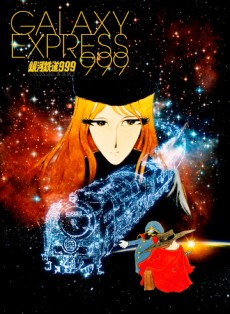 ANIME AdventureGinga Tetsudou 999
ANIME AdventureGinga Tetsudou 999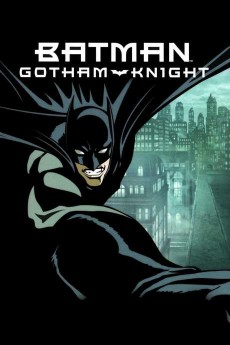 OVA ActionBatman: Gotham Knight
OVA ActionBatman: Gotham Knight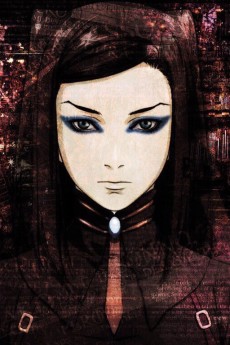 ANIME AdventureErgo Proxy
ANIME AdventureErgo Proxy
SCORE
- (3.65/5)
MORE INFO
Ended inMarch 27, 2003
Main Studio Sunrise
Favorited by 145 Users


